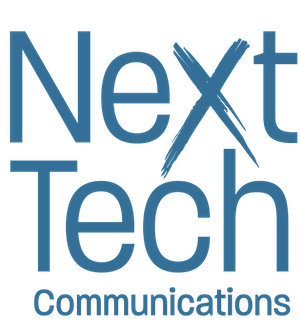
Sep 27, 2022 PR Pros Should Be Thought Leaders, Too
When it comes to public relations, it’s easy—with experience and talented mentors in your corner—to become a PR expert. That is, an expert in the practice and business of all-things PR.
However, in today’s world—as industries shift, companies merge, supply chains struggle and digital media capabilities change the conversation before your client gets a chance to join in—being a PR expert alone isn’t enough.
We tell clients all the time that it’s important to level up from a subject-matter expert (SME) to a true thought leader—and, like most things in PR, it’s important that we walk the walk. That means that today’s PR pros need to be deeply embedded experts on their client’s company, industry at-large and goals.
Whether you’re a generalist leaning into a new sector, or a practice lead who thinks about fintech or cybersecurity in your sleep, it’s about more than knowing the ins and outs of your client: you have to master their industry or sub-sector like it’s your own.
Don’t Just Learn the Language—Become Fluent!
Media relations “best practices” have to go further than drafting and blasting cookie-cutter pitches. Explain the client naturally and articulately, and remember that journalists do their research—they know when they’re getting fed fluff—and keep in mind that your client already has a sales team. Instead, be their representative by bringing both industry AND client knowledge to the table. Institutional knowledge of a client’s business is a step in the right direction and can be a saving grace during personnel turnover, long retainer relationships and strategy sessions—but external knowledge is just as important as that internal understanding. Who are their competitors? What are they saying to the media? Where and to whom? Most importantly, why? Even if you aren’t sitting in the C-Suite, you’re likely the most visible spokesperson to the media that your client has. It’s called an elevator pitch for a reason: if you can’t explain who your client is, what they do and why a journalist should cover them—in the same amount of time an elevator ride would take—then your voice, like your client’s share of voice, won’t be able to cut through the noise, much less the clutter of an editor’s inbox.
Do Your Homework—And Get Addicted to the News Cycle!
Media monitoring is essential to flagging breaking news in real-time, so make it a part of your morning, afternoon and end-of-day routine. Subscribing to trade outlet newsletters is vastly helpful for this because the reporters are likely to have more industry knowledge than anyone else. And while they’re not as widely sought out like they once were, you should revert to editorial calendars, too! They not only tell you what an outlet is covering, but also the trends in that field you can research and home in on. They essentially act as a roadmap to understanding the topics and themes that editors and reporters will be considering. This is crucial when you’re asking them to keep a client in mind. By showing that you’ve done your due diligence and want to provide relevant sources, data and angles that are timely, you can demonstrate that you’re working to support the media—not just your client—in a way that benefits everyone in the industry. You can also start getting your news where your client gets theirs—then go deeper into trades, newsletters, blogs and influencers’ channels to be the one that gets them their own news first. Understanding your client’s industry—and sector or even sub-sector—is the best way to understand their place in it, as well as how to get them where they want to go.
Give as Good as You Get!
Share client news as information. You don’t always need to reach out with a pushy pitch to get in front of educated media. Give reporters as much as you get when it comes to news. Not only will you be more likely to get reporter feedback, you’ll have the potential to learn directly from the media what they’re writing about, interested in and paying attention to. PR pros who develop their passion into a work-related niche can be a game-changing asset to their teams and clients. Train yourself to continually look for strategic ways to build relationships with journalists and keep your clients at the top of their minds and source lists—even if they aren’t the headline of every article.
Listen to reporters covering the field—like, REALLY listen.
Take advantage of any reporter face or phone time you get. Quality journalism pairs with quality knowledge—and often knowledge that comes from PR pros who pitch quality, quotable content. Follow the reporters you’re reading on their social channels, too. They are often just as passionate about that topic as you and the SMEs you support! There is a plethora of knowledge to absorb if you look for it in the right places—even if (especially if!) those right places are new and unexpected.
Say ‘no’ more.
In client services (especially PR, which attracts and demands a ‘can do’ attitude), it can be easy to default to yes—yes to a client’s timeline, ideas and wish-list goals. It’s no secret that we’re living in unpredictable, earth-shattering times with the media overtly reflecting that landscape. Every industry has been affected by various woes since the pandemic began, and news outlets have also shifted their priorities. Don’t be afraid to be the leader on setting a different media strategy than what the client anticipated to account for this change. If you’re well-versed in the sub-sector in question, you’ll be able to speak effortlessly to the reasons, realities, research and risks behind your recommendations. You don’t want to say no for the heck of it, but you do want to earn client trust and create a stronger, smarter campaign that benefits both the client and your media contacts.
The first step to excelling in PR is to master the media landscape you’re submerged in.
And, when the going gets tough, don’t forget why you were hired by your client in the first place! You’re not just a consultant; you should be the leading expert in the room on both the world of media and your client’s world.
If you become a thought leader yourself, your teams and clients alike will recognize you as the pro you are—and help you find your place in the big leagues.


